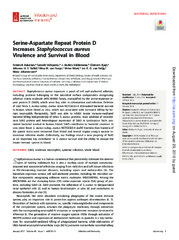| dc.contributor.advisor | Lamu, Admassu Nadew | |
| dc.contributor.advisor | Prof. Olsen, Jan Abel | |
| dc.contributor.author | Mwamba, Martin Jack | |
| dc.date.accessioned | 2018-02-26T07:04:24Z | |
| dc.date.available | 2018-02-26T07:04:24Z | |
| dc.date.issued | 2018-01-08 | |
| dc.description.abstract | Background: Cost utility analysis evaluates health care interventions in terms of their cost per quality adjusted life year (QALY) gained. The EQ-5D, SF-6D, 15D and HUI3 are the most common health state utility (HSU) instruments used to put the ‘quality adjustment weight’ into the QALY. However, HSU instruments are not always available or appropriate for every health conditions. For measuring the general cancer quality of life, clinicians and researchers prefer to use the European organization for research and treatment quality of life questionnaire core 30 (EORTC QLQ-C30). But the EORTC QLQ- C30 is not ‘preference-based’ and thus cannot be used to derive the ‘quality adjustment weight’ for use in QALYs. Mapping algorithms have been developed to predict health state values from EORTC QLQ- C30 but there is considerable uncertainty as to which HSU instrument best fits EORTC QLQ-C30.
Objectives: To estimate mapping models that predict utilities for four HSU instruments (EQ-5D, SF- 6D, 15D and HUI3) based on EORTC QLQ-C30 using two regression techniques (OLS and GLM).
Methods: Data used for the study was obtained from the multi-instrument comparison (MIC) survey. The study focused on 772 respondents (cancer patients) who completed the questionnaires for EORTC QLQ-C30, EQ-5D, SF-6D, 15D and HUI3. Mapping algorithms were fitted to predict health state values for EQ-5D, SF-6D, 15D and HUI3 from the scales/items of EORTC QLQ-C30 using ordinary least square (OLS) methods and generalized linear models (GLM). Model predictive ability was compared by normalized mean absolute error (%MAE) and root mean squared error (%RMSE) even though the R2, MAE and RMSE were reported.
Results: The OLS model generated identical mean utility values to the observed values for EQ-5D, SF- 6D and 15D compared to only 15D for the GLM model. Explanatory powers were relatively high for all four HSU instruments with the R2 ranging from 0.601 (HUI3 using GLM) to 0.762 (15D using OLS). The lowest %MAE was generated by the EQ-5D algorithm (6.4%) using OLS and the highest %MAE was for HUI3 (11.9%) using GLM. Algorithm mapping onto EQ-5D had the lowest %RMSE (9.3%) using OLS and the highest %RMSE was for HUI3 (15.1%) using GLM.
Conclusion: The mapping algorithms presented in the study prove that the scores of EORTC QLQ-C30 can be mapped onto any of the four HSU instruments without significantly compromising the results of the intended CUA. | en_US |
| dc.identifier.uri | https://hdl.handle.net/10037/12210 | |
| dc.language.iso | eng | en_US |
| dc.publisher | UiT Norges arktiske universitet | en_US |
| dc.publisher | UiT The Arctic University of Norway | en_US |
| dc.rights.accessRights | openAccess | en_US |
| dc.rights.holder | Copyright 2018 The Author(s) | |
| dc.rights.uri | https://creativecommons.org/licenses/by-nc-sa/3.0 | en_US |
| dc.rights | Attribution-NonCommercial-ShareAlike 3.0 Unported (CC BY-NC-SA 3.0) | en_US |
| dc.subject.courseID | HEL-3950 | |
| dc.subject | HRQoL, EQ-5D, EORTC, Mapping, 15D, SF-6D | en_US |
| dc.subject | VDP::Matematikk og Naturvitenskap: 400::Matematikk: 410::Anvendt matematikk: 413 | en_US |
| dc.subject | VDP::Mathematics and natural science: 400::Mathematics: 410::Applied mathematics: 413 | en_US |
| dc.subject | VDP::Medisinske Fag: 700::Klinisk medisinske fag: 750::Allmennmedisin: 751 | en_US |
| dc.subject | VDP::Medisinske Fag: 700::Klinisk medisinske fag: 750::Allmennmedisin: 751 | en_US |
| dc.subject | VDP::Medisinske Fag: 700::Helsefag: 800::Epidemiologi medisinsk og odontologisk statistikk: 803 | en_US |
| dc.subject | VDP::Medical disciplines: 700::Health sciences: 800::Epidemiology medical and dental statistics: 803 | en_US |
| dc.subject | VDP::Matematikk og Naturvitenskap: 400::Informasjons- og kommunikasjonsvitenskap: 420::Algoritmer og beregnbarhetsteori: 422 | en_US |
| dc.subject | VDP::Mathematics and natural science: 400::Information and communication science: 420::Algorithms and computability theory: 422 | en_US |
| dc.subject | VDP::Samfunnsvitenskap: 200::Økonomi: 210::Samfunnsøkonomi: 212 | en_US |
| dc.subject | VDP::Social science: 200::Economics: 210::Economics: 212 | en_US |
| dc.title | Mapping the EORTC QLQ-C30 to four preference-based measures (EQ-5D, SF-6D, 15D and HUI3). | en_US |
| dc.type | Master thesis | en_US |
| dc.type | Mastergradsoppgave | en_US |


 English
English norsk
norsk



